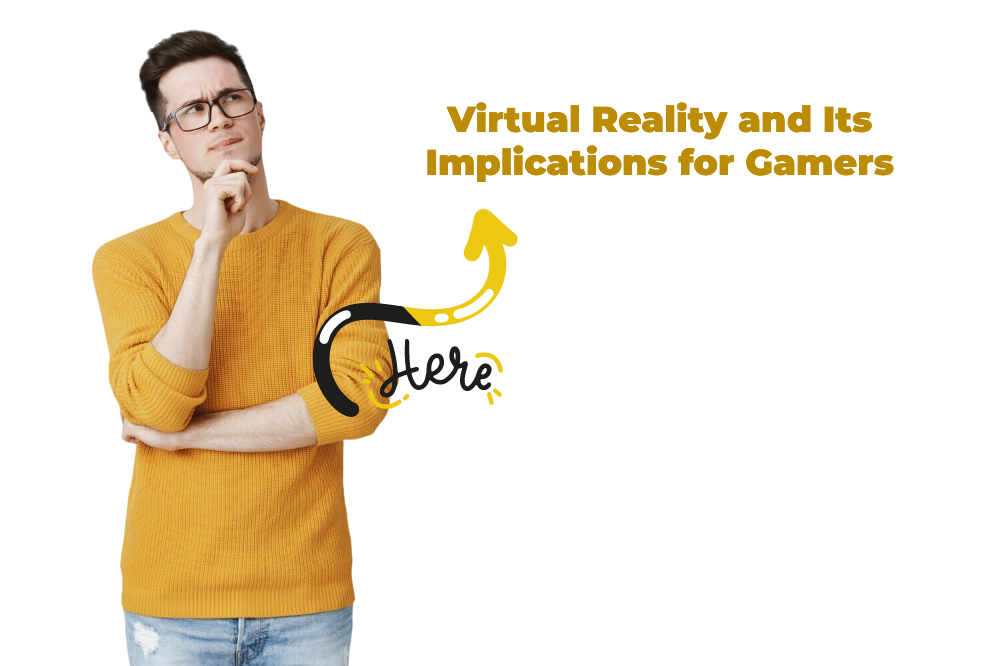Introduction: 🎮🌟 Get ready to step into a new dimension of gaming! Virtual Reality (VR) has emerged as a groundbreaking technology that promises to revolutionize the gaming industry. With its immersive experiences and unprecedented levels of player engagement, VR has captured the imagination of gamers worldwide.
In this in-depth article, we will explore the future of gaming and delve into the exciting realm of virtual reality.
From its transformative potential to the implications for gamers, we’ll uncover the captivating world of VR and its impact on the future of gaming.
I. Understanding Virtual Reality (VR) Virtual Reality has evolved from a science fiction concept to a tangible reality, thanks to advancements in technology. Let’s explore what VR truly entails:
- Definition and Concept: Virtual Reality refers to a simulated environment that immerses users in a computer-generated world, simulating real-life experiences. Through specialized headsets and motion-tracking devices, users can interact with and explore virtual environments as if they were physically present.
- Key Components of VR: VR technology comprises various components that work in tandem to create a seamless and immersive experience:a. Headsets: VR headsets, such as the Oculus Rift and HTC Vive, provide users with a visual and auditory gateway into the virtual world. These headsets feature high-resolution displays and integrated headphones to enhance immersion.b. Input Devices: Controllers, handheld devices, and motion-tracking systems enable users to interact with objects and navigate within virtual environments. These devices track movements and gestures, translating them into in-game actions.
II. The Impact of VR on Gaming Virtual Reality has the potential to redefine gaming as we know it. Let’s delve into its implications for gamers and the gaming industry:
- Immersive Gameplay: VR creates an unparalleled level of immersion, enabling gamers to be fully present in virtual worlds. Players can physically move, gesture, and manipulate objects within the game, leading to a more visceral and engaging gaming experience.
- Enhanced Realism: By simulating real-world environments and interactions, VR blurs the line between the virtual and physical realms. The ability to see and interact with lifelike characters and environments adds a new layer of realism to gaming, creating a sense of presence and emotional connection.
- Expanding Game Genres: VR opens up new possibilities for game genres that thrive on immersion and spatial exploration. From heart-pounding horror experiences to breathtaking exploration games, VR offers unique gameplay mechanics and narrative opportunities that traditional gaming platforms cannot replicate.
III. Challenges and Considerations While Virtual Reality holds tremendous potential, several challenges need to be addressed for its widespread adoption:
- Cost and Accessibility: VR technology, particularly high-end headsets, can be expensive, limiting accessibility for some gamers. However, with advancements and market competition, prices are expected to decrease over time, making VR more accessible to a broader audience.
- Motion Sickness and Comfort: Some users may experience motion sickness or discomfort while using VR headsets, mainly due to latency or mismatched movements. Developers need to prioritize optimizing experiences and reducing potential discomfort to ensure a smooth and enjoyable VR gaming experience for all players.
IV. The Future of Gaming with VR The future of gaming is intrinsically tied to the evolution of Virtual Reality. Here are a few exciting possibilities that lie ahead:
- Enhanced Multiplayer Experiences: VR has the potential to transform multiplayer gaming, allowing players to interact with each other in virtual spaces, regardless of physical distance. Collaborative gameplay, shared adventures, and virtual socializing will become integral components of the VR gaming experience.
- Cross-Platform Integration: As VR technology becomes more accessible, developers are likely to explore cross-platform integration. This would enable players on different VR devices and traditional
platforms to interact and play together, fostering a more inclusive and connected gaming community.
- Integration with Other Technologies: VR is not limited to gaming alone. It has the potential to merge with other technologies, such as augmented reality (AR) and artificial intelligence (AI), creating even more immersive and interactive experiences. Imagine exploring virtual worlds populated by AI-controlled characters or overlaying virtual objects onto the real world through AR integration.
Conclusion: 🎮🌟 The future of gaming is undoubtedly intertwined with the rise of Virtual Reality. As VR technology continues to evolve, it will reshape the way we play, experience, and interact with games. The potential for immersive gameplay, enhanced realism, and innovative experiences is boundless.
Are you ready to don your VR headset and embark on extraordinary virtual adventures? The world of gaming is on the cusp of a revolution, and Virtual Reality is leading the way.
🔗 For more gaming-related articles and updates, visit PopGoes, your ultimate source for all things gaming.
✍️ This article was written by Murari, a gaming enthusiast and technology advocate passionate about exploring the limitless possibilities of Virtual Reality.
🌟 Immerse yourself in the future of gaming and unlock a world of infinite possibilities with Virtual Reality! 🎮🌟 sprunki horror Endless Fun Awaits!


WONDERFUL Post.thanks for share..more wait .. …
Hello. remarkable job. I did not expect this. This is a excellent story. Thanks!
I like what you guys are up too. Such smart work and reporting! Carry on the superb works guys I’ve incorporated you guys to my blogroll. I think it will improve the value of my site 🙂